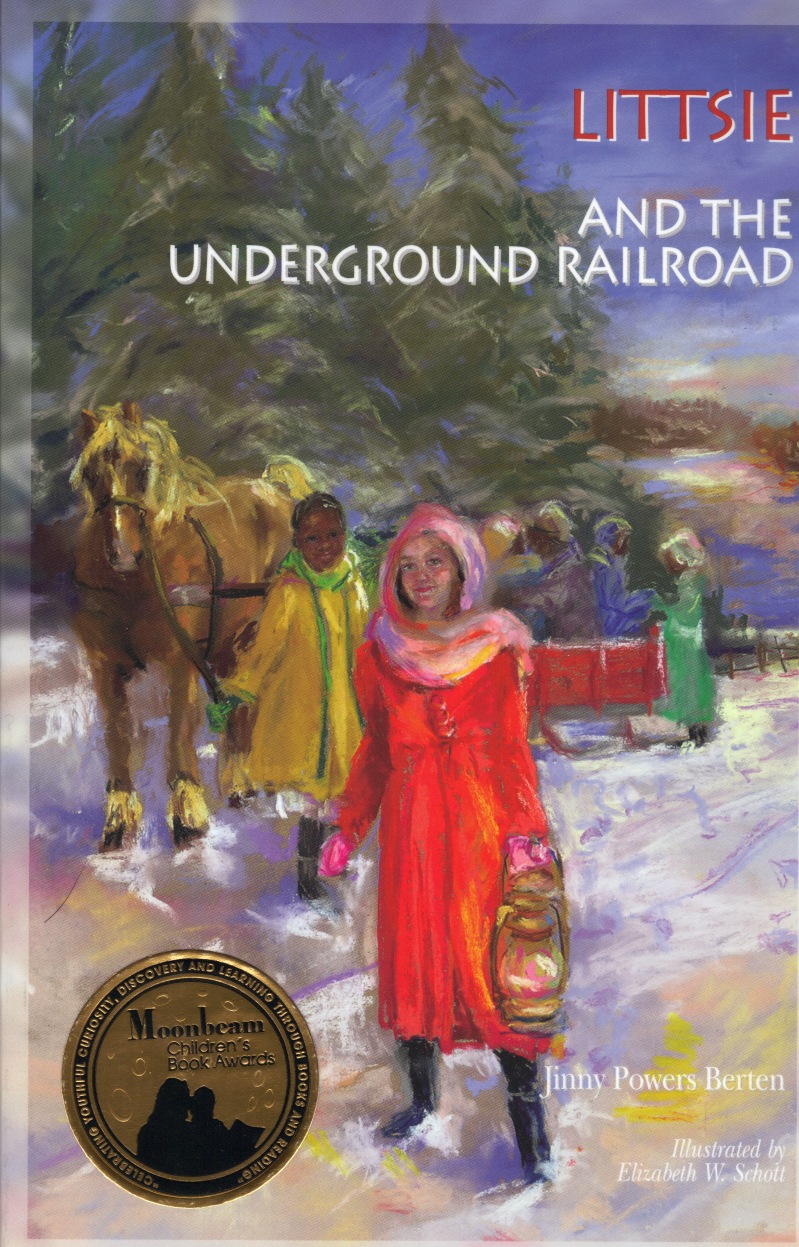
Littsie and the Underground Railroad

This is the second book in the Littsie series. It starts with Littsie recounting what happened in the first book, which included the death of her parents due to a cholera epidemic and finding her sister at the Cincinnati Orphan Asylum.
Euleen is also still there. She was the slave that Littsie helped free.
Littsie gets a horse early in the story by helping to heal it. She sees a train which is a sign of the progress that is coming and of a major change in the way things were done around the city.
She goes to an anti-slavery meeting and gets involved in the underground railroad, helping to take slaves fleeing from Kentucky across the Ohio River on to safe houses, and then on to moving further along the underground railroad. The city is split about abolition, though, as is seen when abolitionists are pelted with rotten eggs and the tails and the manes of their horses are clipped.
Keep in mind that, at the time, Ohio was technically a free state, but it was also perfectly legal for slave-owners to come across the river, into Ohio, and capture their runaway slaves (if they could) and take them back to the South. There would also be ads in papers about runaway slaves and rewards for catching them and turning them over to their 'owners.'
(Slaves were incredibly expensive. The prices could run $1000 and up. This was around 150 years ago, so I'm not sure what that would be in today's money, but it would probably be quite a bit.)
Littsie also becomes involved with Harriet Beecher who would late go on to write Uncle Tom's Cabin.
Littsie also helps a family of blacks settle in the house where she used to live.
There's also a section which deals with how Meghan, Littsie's sister, worked in a cotton mill and how terrible the conditions were there.
This is a very good introduction to the underground railroad for younger readers. I also think the artwork in the book has improved considerably over that in the first book in the series. The book has won a Moonbeam Children's book award, and it's not surprising.
Something I found in Memoirs of the Miami Valley, 1919, about the Cincinnati Female Academy.
In 1823 John Locke, M. D., established the Cincinnati Female
academy on Walnut street, between Third and Fourth streets.
There were teachers in the French language, music, penmanship,
and needlework, and an assistant ih the preparatory department.
Twelve gentlemen formed a board of visitors who examined the
pupils and superintended the academy. The price of tuition, exclu-
sive of music and the French language, was from $4 to $10 a quarter.
In August of each year there was a public examination at which
medals and honorary degrees of the academy were awarded. Fol-
lowing the annual examination there was a vacation of four weeks.
The academy possessed competent apparatus for illustrations in
chemistry, natural philosophy, astronomy, and for teaching the
simple elements of the different branches to the younger pupils.
The demonstrative method of teaching was employed, by which a
knowledge of things instead of words alone was imparted. In
fact, it was Pestalozzi's method of instruction. Patrons were care-
fully informed that the idea entertained by some persons that the
system of Pestalozzi tends to infidelity was unfounded.
About four years were required to pass through the prescribed
course of study in order to obtain the honorary degree of the acad-
emy. Mrs. Frances Trollope, who in 1828 visited Cincinnati, in
her book on Domestic Manners of Americans, speaks with surprise
of an exhibition where the higher branches of science were among
the studies and where one lovely girl of sixteen took her
degree in mathematics and another was examined in moral
philosophy.
Main Index
Yadult Index
|